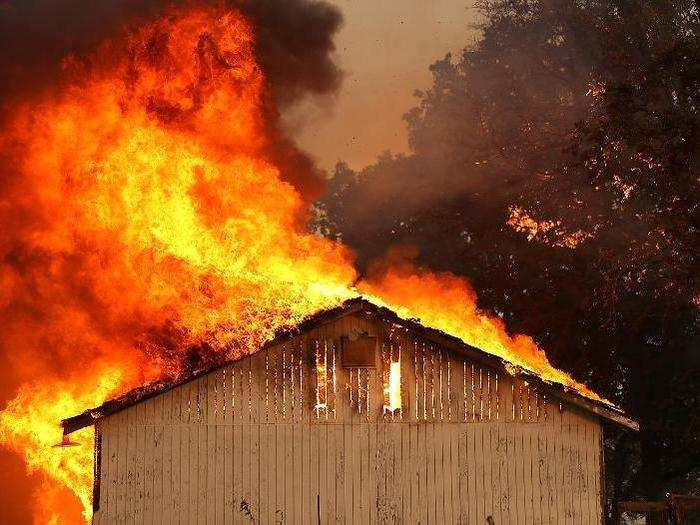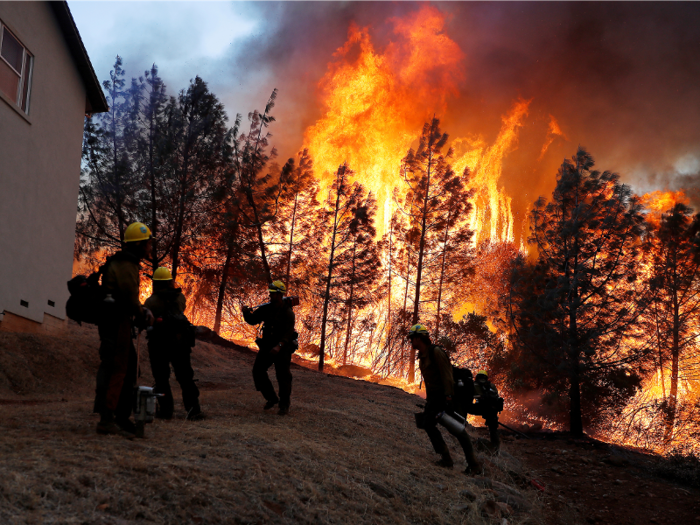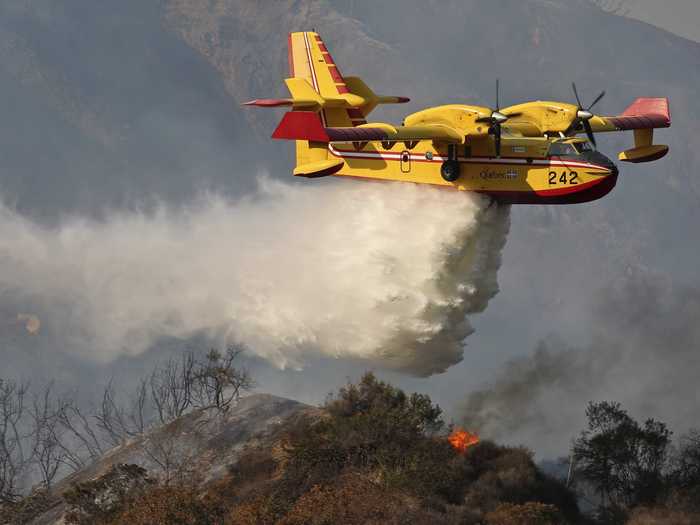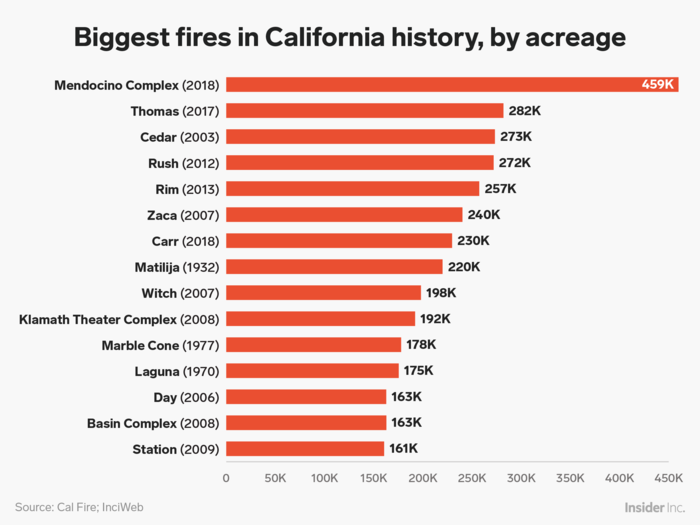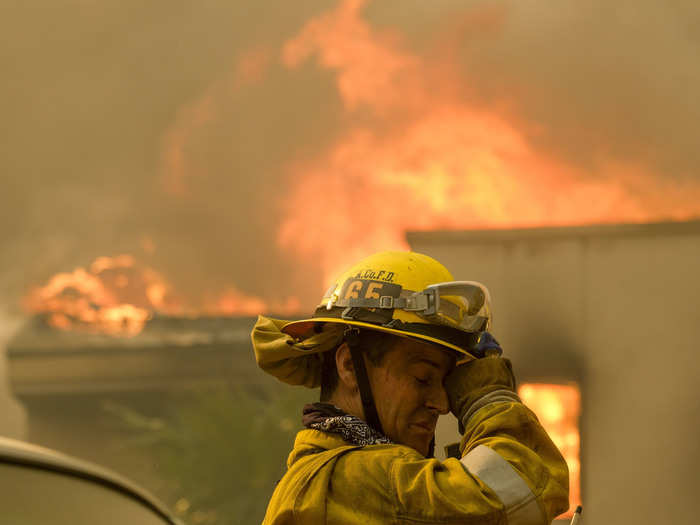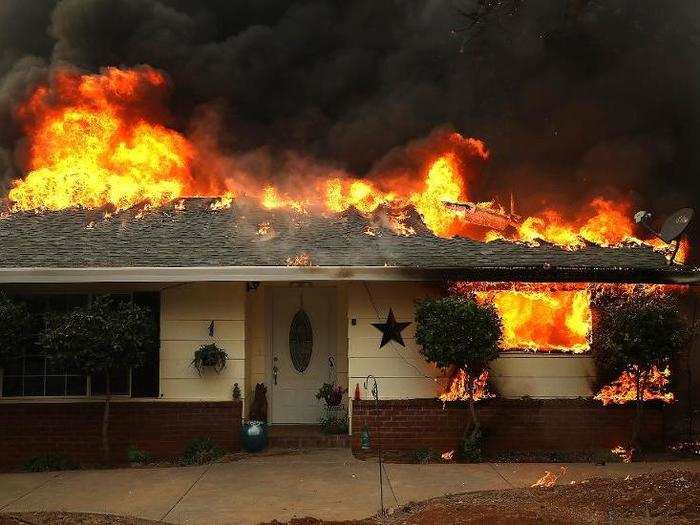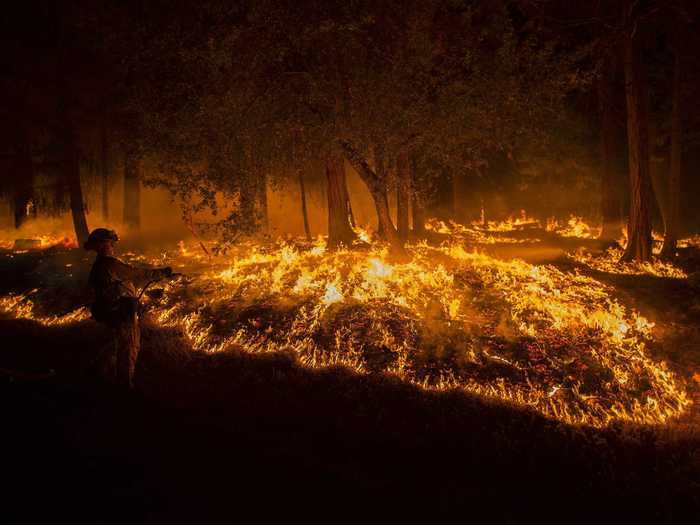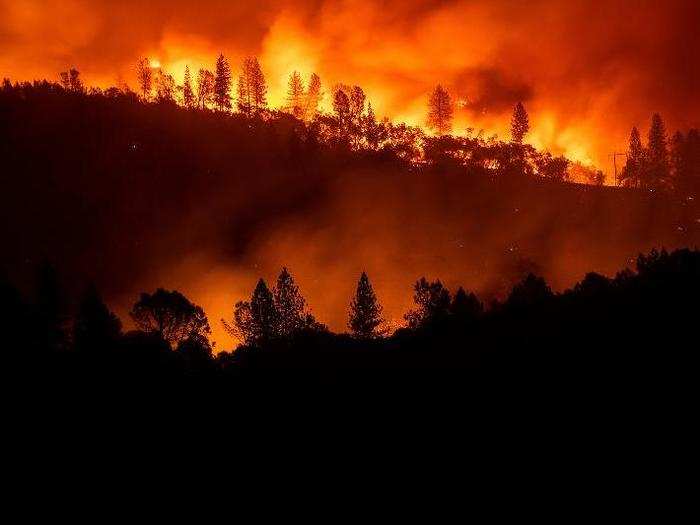California's Mendocino fire covered a total area nearly 10 times the size of San Francisco.
The Mendocino Complex fire, which broke out in July 2018, is the largest on record in California. It burned an area stretching more than 450,000 acres.
The US Forest Service spends 12 times as much money suppressing wildfires as it did in 1985.
The number of US homes at risk of wildfires has gone up dramatically, from 30.8 million in 1990 to 43.4 million in 2010.
Since the 1970s, the average temperatures in spring and summer have gone up by 1.8 degrees Fahrenheit (1 degree Celsius) in California.
Twelve of the 15 largest fires in California history have occurred since 2000.
Fire season in the western US is now 105 days longer than it was in the 1970s.
Annual financial losses due to wildfires now range from $63.5 billion to $285 billion.
In 2016, up to $285 billion in economic losses were caused by fire-related deaths, evacuations, and declining property values.
By 2050, California will have 24 more days each year with high risk for wildfires.
As many as 11 states could see a 500% increase in the amount of land burned annually by 2039, according to a recent study.

